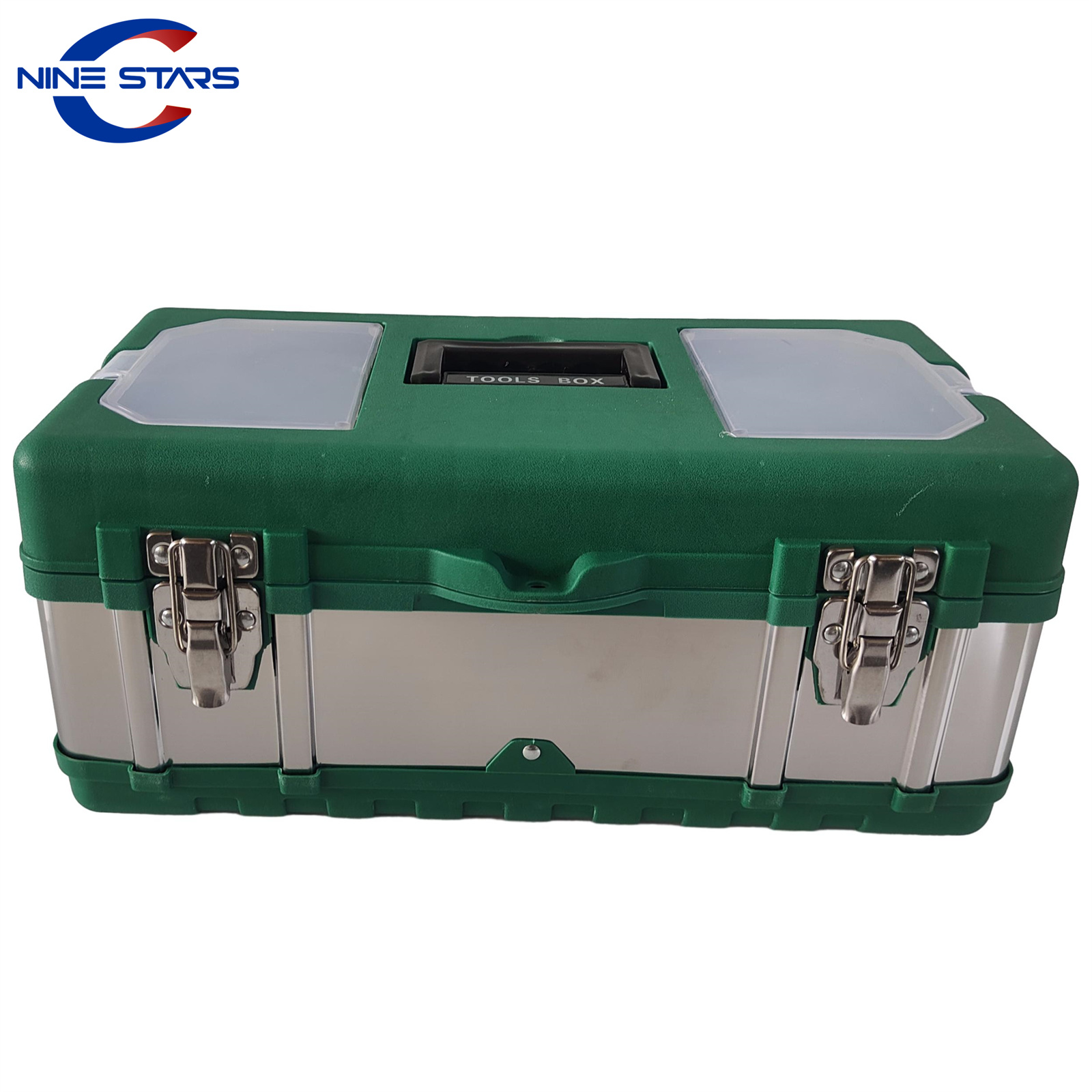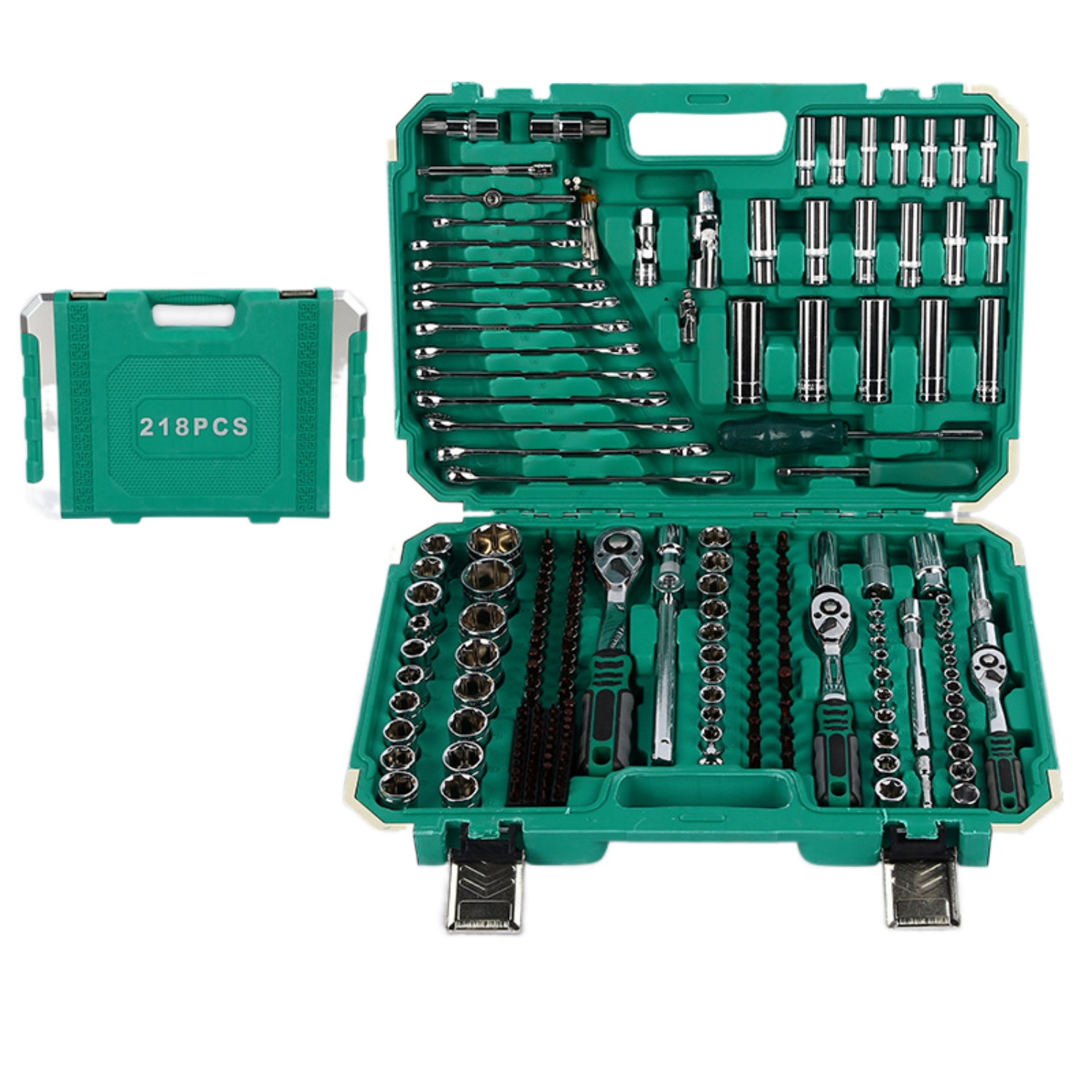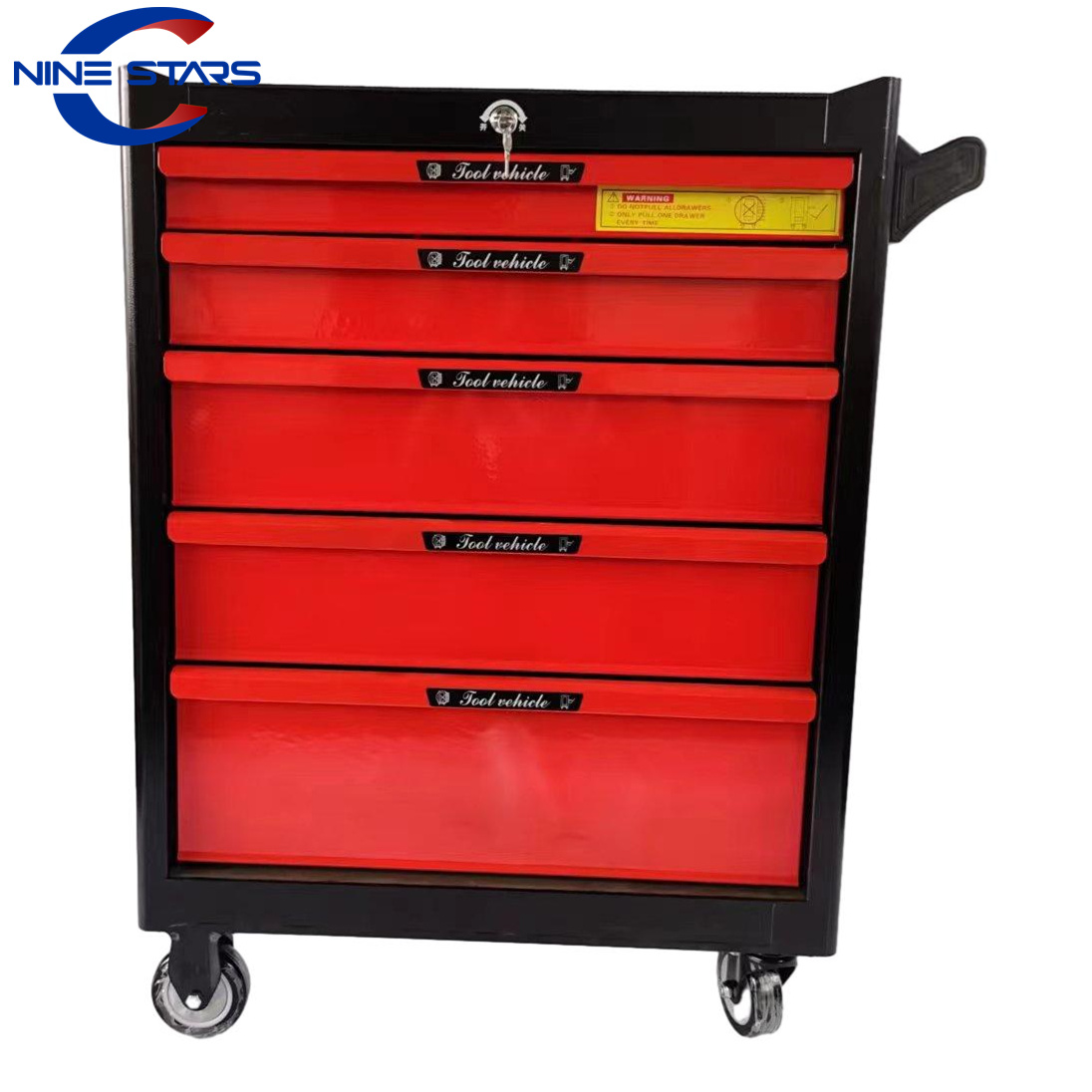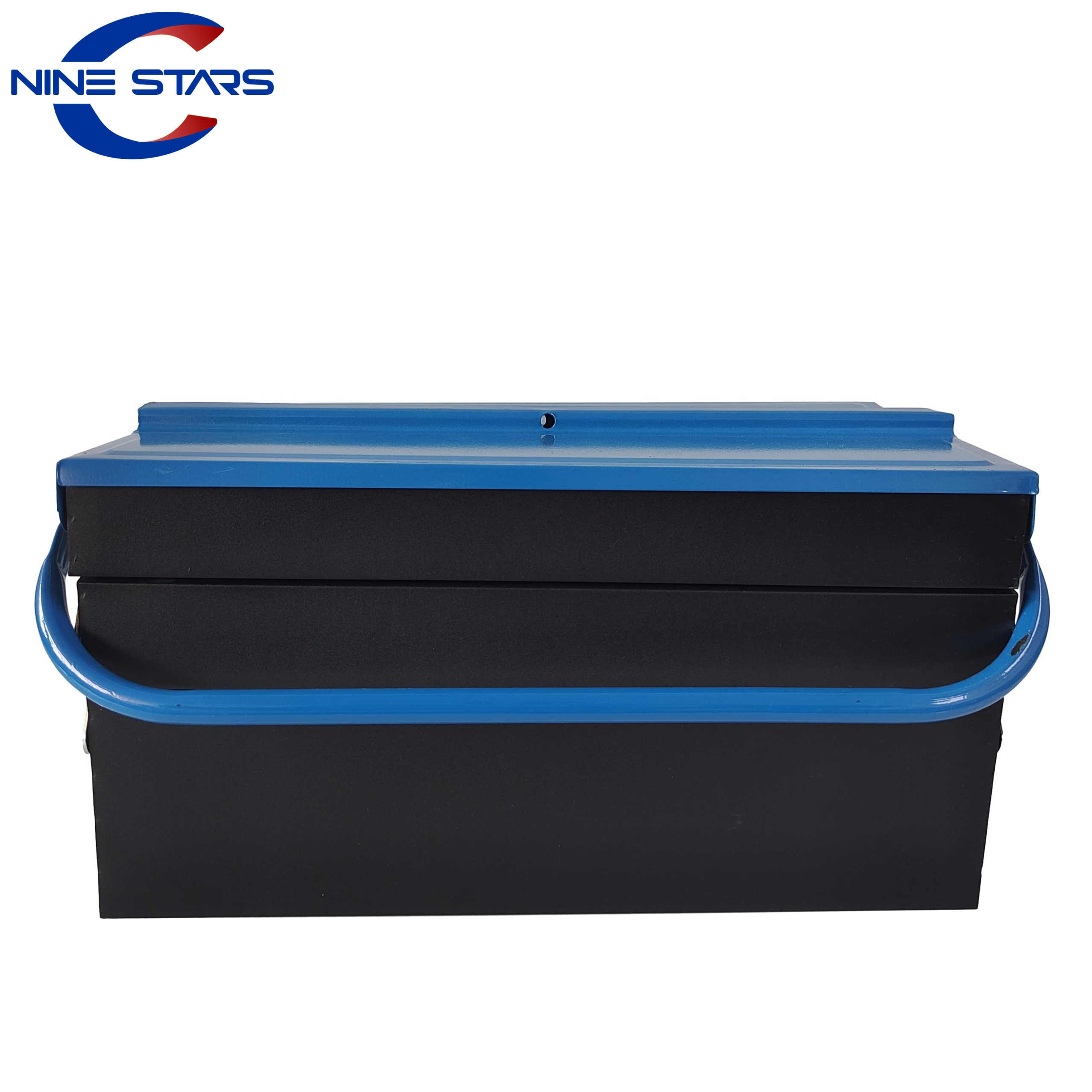A toolbox is more than just a container; it's a vital product for anyone who uses tools, from DIY enthusiasts to seasoned professionals. Its primary meaning is to organize, protect, and transport your valuable equipment. This article is worth reading because, as a factory owner with years of experience in manufacturing tool storage solutions, I'll share insights to help you select the ideal toolbox, whether you need a portable toolbox, a sturdy metal one with a removable tray and secure latch, or even a specialized toolbag. We'll explore how the right item can transform your workspace, ensure your tools are always ready, and make your projects more efficient. We'll delve into making your tool management more compact and effective.
What Exactly is a Toolbox and Why is it an Essential Product for Every Shop?
A toolbox (or tool box) is a container designed to hold, organize, protect, and carry various tools. Think of it as a mobile command center for your hardware. For any shop, whether it's a professional automotive workshop, a construction site, or a home garage, having the right tool storage is not just a convenience—it's a necessity. It prevents tools from getting lost, damaged, or rusty, and it saves a lot of time by keeping everything in its designated place, ready for quick access. A well-organized toolbox means you can find your plier or screwdriver in seconds, not minutes.
The essential nature of a toolbox stems from its ability to improve workflow and protect investments. Tools can be expensive, and leaving them scattered around exposes them to potential damage from impact, moisture, or even theft. A good tool box acts as a shield. Moreover, efficiency in any task relies heavily on preparation. When your tools are systematically arranged, you spend less time searching and more time doing. This is particularly true for professionals like mechanics or carpenters whose livelihood depends on quick and effective tool use. The organization a toolbox provides is, therefore, directly linked to productivity and profitability. For instance, many of our clients, like Mark Thompson, who source tool storage solutions for hardware retailers and construction companies, emphasize how critical good organization is for their end-users.
Imagine a busy mechanic trying to find a specific socket in a cluttered shop. Every minute wasted is a minute not spent on a billable repair. Now, picture that same mechanic with a well-organized tool chest or toolbox, where every tool has its place. The difference in efficiency is remarkable. This is why the demand for quality tool storage, from simple portable toolboxes to large, multi-drawer cabinets, remains consistently high. It’s a fundamental item that supports the core activities of countless trades and hobbies, making the investment in a good toolbox one that pays for itself many times over.
How Do Different Toolbox Materials Impact Durability and Price? (Metal vs. Plastic)
When you decide to buy a toolbox, one of the first choices you'll face concerns the material. The most common options available are metal (typically steel or aluminum) and plastic. Each has its pros and cons, significantly impacting the toolbox's durability, weight, and, of course, price. As a manufacturer, we work extensively with both, and understanding their characteristics is key to making an informed purchase.
Metal toolboxes, especially those made from steel, are renowned for their strength and durability. They can withstand a lot of abuse, making them ideal for heavy-duty environments like construction sites or busy automotive garages. A metal tool box offers excellent protection against impacts and can often carry heavier loads without deforming. Stainless steel variants also provide good resistance to rust, though powder-coated steel is more common for a balance of protection and cost. The trade-offs? Metal toolboxes are generally heavier, which can be a concern for portability, and they tend to be more expensive than their plastic counterparts. However, for longevity and ruggedness, a quality metal toolbox is often worth the investment. We produce many such units, and customers who prioritize robustness, like those outfitting a truck bed for field work, often prefer metal.

On the other hand, plastic tool boxes offer a lightweight and often more cheaper alternative. Modern plastics can be surprisingly rugged and resistant to rust, corrosion, and dents, making them a practical choice for many users. A plastic tool box is easier to carry around, which is a significant advantage for mobile technicians or DIYers who need to move their tools frequently. Many plastic toolboxes also feature molded compartments and organizers, enhancing their utility for storing small parts and accessories. However, they might not offer the same level of impact strength as metal and can become brittle in extreme cold or degrade under prolonged UV exposure if not made with UV inhibitors. When selecting a plastic tool box, it's important to look for high-quality, impact-resistant polymers. We've seen a growing demand for reinforced plastic tool boxes that offer a good compromise between weight, durability, and cost.
What Are the Key Features to Look for When You Buy a Toolbox Item? (Latch, Tray, Lock, Price Considerations)
When you're ready to buy a toolbox, several key features will determine its functionality, security, and overall value for its price. Paying attention to these details can make a big difference in your daily use and the longevity of the item. It's not just about having a box; it's about having the right tool box for your specific needs.
First, consider the latch mechanism. A good latch should be robust and easy to operate, ensuring the toolbox lid stays securely closed, especially when you carry it. Metal latches are generally more durable than plastic ones, though high-quality plastic latches can also be effective. Some toolboxes feature multiple latches for added security and a tighter seal. Next is the tray. Many toolboxes come with a removable tray that sits at the top, perfect for organizing smaller, frequently used tools like screwdrivers, pliers, or measuring tapes. This tray allows for quick access to essential items without having to dig through the main compartment. Look for a tray that is sturdy and fits well. Some toolboxes even offer multiple trays or configurable organizer sections.

The presence and quality of a lock or a provision for one (like a padlock hasp) is another crucial feature, especially if you store valuable tools or work in shared environments. A built-in lock or a sturdy hasp can deter opportunistic theft and keep your tools safe. The hinge connecting the lid to the base of the toolbox is also vital; a continuous piano hinge is often more durable than smaller, individual hinges, particularly on a metal tool box. Finally, the handle must be a comfortable handle and strong enough to support the weight of the toolbox and its contents. For larger or heavier toolboxes, side handles in addition to a top handle can be very useful. All these features collectively contribute to the price and functionality of the tool box. From our experience as manufacturers, we advise customers like Mark to carefully assess these features against their operational needs and budget to find the best value. It's not just about the initial price, but the long-term service the toolbox will provide.
Exploring the Variety: What Toolbox Options Are Available for Different Needs? (Portable, Truck Bed, Garage)
The world of toolboxes is incredibly diverse, with options available to suit almost any need, from the home garage to the professional truck bed. Understanding this variety can help you choose a product that truly enhances your work. As a factory, we produce a wide range of these, and I can tell you that one size definitely does not fit all.
For those who need to carry their tools to different job sites, a portable toolbox is essential. These are often compact, lightweight, and designed with sturdy handles. They can be made of metal or plastic, with plastic tool boxes often being preferred for their lighter weight. Many portable toolboxes include a removable tray for small items and a secure latch. Some even come with wheels and a pull handle, like a small suitcase, making them mobile and easy to transport even when fully loaded. Then there are specialized truck bed toolboxes. These are typically larger, heavy-duty metal containers designed to be mounted onto the bed of a pickup truck. They provide secure storage for tools and equipment, protecting them from weather and theft while on the go. These are built for durability and often feature robust locking mechanisms and weather seals to keep contents dry.
For stationary storage in a garage or workshop, the options available expand to include tool chests and cabinets. A tool chest usually has multiple drawers and may sit on a workbench or a larger rolling cabinet. These allow for meticulous organization of a large number of tools, with each drawer potentially dedicated to specific types like wrenches, sockets, or pliers. We manufacture mobile tool cabinet units that are incredibly popular in automotive shops for this reason. They combine storage capacity with mobility within the workspace. There are also versatile options like versatile folding tool boxes that offer multiple trays that spread out when opened, providing excellent access to a lot of tools in a relatively compact form when closed.
How Can a Toolbox Super-Charge Your Organization and Efficiency?
A toolbox is far more than just a storage container; it's a fundamental tool for super-charging organization and efficiency in any task involving tools. The impact of a well-organized toolbox can be felt from the smallest home repair to the largest construction project. It's about creating a system where every tool has a designated place, making it quickly accessible and easy to account for.
The primary way a toolbox boosts efficiency is by minimizing wasted time. Searching for a misplaced tool can be incredibly frustrating and a significant drain on productivity. With a properly organized toolbox, complete with trays, compartments, and perhaps even custom foam inserts, you know exactly where each item is. This means you can grab your ratchet, socket, or plier in an instant. This level of organization also helps in quickly identifying if a tool is missing, preventing loss and the associated replacement costs. For professionals, time saved directly translates to more work completed and higher earnings. The systematic arrangement a toolbox facilitates also contributes to a safer work environment by reducing clutter and the risk of tripping hazards or tools falling from unsecured locations.
Moreover, a good toolbox system encourages a disciplined approach to tool management. The act of returning each tool to its place after use becomes a habit, reinforcing organization. This is especially beneficial when working with a lot of small parts or specialized tools. Many toolboxes, particularly tool chests with multiple drawers, allow for very granular organization. You can dedicate specific drawers to different types of tools or even different stages of a project. This level of detail in organization means that you can mentally map out your tools, further speeding up access and workflow. For businesses purchasing toolboxes for their teams, this enhanced efficiency and organization translates to better project turnaround times and improved professionalism.
What Should You Consider About Price vs. Quality When Selecting a Toolbox Product?
When selecting a toolbox product, the balance between price and quality is a critical consideration. It's tempting to opt for the cheaper option, but as with many things, you often get what you pay for. As someone who oversees the production of various toolboxes, I always advise customers to think long-term. A low price might be attractive initially, but if the toolbox fails prematurely, needs frequent replacement, or doesn't adequately protect your valuable tools, it can end up costing more in the long run.
Quality in a toolbox manifests in several ways: the material used (e.g., thicker gauge steel vs. thin metal, or high-impact plastic vs. brittle plastic), the construction (e.g., welded seams vs. rivets, quality of hinges and latches), and the design features (e.g., smooth-gliding drawer slides, ergonomic handles, effective seals). A higher-quality toolbox will generally be more durable, withstand more wear and tear, and offer better protection for your tools. For instance, a well-built metal tool box with a good latch and lid will keep your tools secure and dry, preventing rust and damage. This durability means it will last longer, reducing the need for replacements. Investing a bit more upfront for a product with proven strength and reliability can save a lot of headaches and money.
However, this doesn't mean everyone needs the most expensive, heavy-duty toolbox available. The key is to match the quality and price to your specific needs and usage patterns. A DIY enthusiast who uses their tools occasionally might find a mid-range plastic tool box perfectly adequate. Conversely, a professional mechanic or a construction crew using their tools daily in harsh conditions should invest in a high-quality, rugged toolbox designed for such environments. It's about finding the sweet spot where the price is justifiable for the level of quality and features you genuinely require. Always inspect the toolbox for build quality: check the hinge, latch, handle, and the thickness of the material. Reading reviews and understanding the warranty (if any) can also provide insights into the expected lifespan and reliability of the toolbox product.

Frequently Asked Questions About Toolbox Maintenance and Security.
Many users, from hobbyists in their garage to professionals on a job site, frequently have questions about maintaining their toolbox and ensuring the security of their tools. Proper care can significantly extend the life of your toolbox, and good security practices can protect your valuable investment in tools.
One common question is about cleaning and rust prevention, especially for metal toolboxes. To maintain your toolbox, regularly wipe it down to remove dirt, grease, and moisture. For metal toolboxes, ensure they are kept dry to prevent rust. If you notice any surface rust, address it promptly with a rust remover and then apply a protective coating or paint. For the interior, consider using drawer liners; they not only protect the toolbox surface but also prevent tools from sliding around and absorb any minor spills. Lubricating hinges, latches, and drawer slides periodically will keep them operating smoothly. For a plastic tool box, cleaning is generally simpler – usually, a wipe with a damp cloth is sufficient. Avoid harsh chemical cleaners that could degrade the plastic over time.
Regarding security, the primary concern is preventing theft of tools. If your toolbox has built-in locks or a padlock hasp, use them consistently. Choose a quality lock that is difficult to pick or break. For toolboxes stored in a vehicle like a truck bed tool box, ensure it is securely bolted down and consider additional vehicle security measures. In a workshop or garage, if possible, position your toolbox in a less visible area or secure the workshop itself. For very valuable tool collections, some users even opt for toolboxes with advanced locking systems or store them within larger, locked cabinets or rooms. Remember, a visible deterrent, like a strong lock, can often be enough to discourage opportunistic thieves. It’s also a good idea to keep an inventory of your tools, perhaps with photos or serial numbers, in case you need to make an insurance claim after a return from a job or due to theft.
Beyond the Box: Are Tool Bags a Viable Alternative for Your Shop or Item Storage?
While traditional toolboxes are excellent for many situations, they aren't the only solution for tool storage and organization. Tool bags (or toolbags) have become increasingly popular, offering a flexible and often more lightweight alternative, particularly for those who need to carry a select set of tools or work in varied environments. As a manufacturer, we've seen a growing demand for high-quality tool bags alongside our metal and plastic tool box lines.
A tool bag is typically made from durable fabric, like canvas or nylon, and features multiple pockets, loops, and compartments, both internal and external. This design allows for a high degree of organization, often better suited for certain types of tools (like pliers, screwdrivers, and wrenches) than a single-compartment toolbox. The soft construction means a toolbag can conform to an irregular load and fit into tighter spaces where a rigid toolbox might not. They are also generally lighter to carry than a metal tool box of similar capacity. Many tool bags come with padded shoulder straps in addition to handles, making them more comfortable for transport over longer distances or up stairs. Some even have a reinforced bottom or base to protect against wear and tear and moisture.
However, tool bags do have limitations compared to traditional toolboxes. They may not offer the same level of protection against impacts or crushing. While many are water-resistant, they are generally not as weatherproof as a well-sealed metal or plastic tool box with a tight lid and latch. Security can also be a concern, as fabric is easier to cut than steel, though some tool bags feature zipper tool compartments that can be padlocked. The choice between a toolbox and a tool bag often comes down to the specific application. For a stationary shop or garage setup, or for transporting very heavy or sensitive tools, a toolbox or tool chest might be better. But for electricians, plumbers, or maintenance technicians who need to carry a curated set of tools and appreciate portability and detailed organization through multiple pouch-like sections, a tool bag can be an excellent and efficient item. Some professionals even use both: a larger toolbox as a central storage unit and a smaller tool bag for daily tasks or specific jobs.
Finding the best place to buy your next toolbox depends on your specific requirements, whether you're an individual looking for a portable toolbox for your garage or a procurement officer like Mark Thompson sourcing a large lot of tool storage solutions for a business. There are many options available, each with its advantages.
Hardware stores and home improvement centers are common places for individuals to buy a toolbox. They offer the advantage of seeing and handling the product before purchasing, allowing you to check the latch, tray, and overall build quality. You can assess the metal thickness or plastic sturdiness firsthand. However, their selection might be limited to popular consumer brands and models, and the price might be higher due to retail markups. For more specialized or heavy-duty toolboxes, industrial supply companies or specialty tool shops (both physical and online) often provide a wider range and more robust options available. These suppliers cater more to professional users and may offer better advice for specific applications, like outfitting a mechanics' shop or finding a rugged toolbox for a construction site.
For businesses looking to buy in bulk or seeking customizable options available, purchasing directly from manufacturers or through established B2B distributors is often the most cost-effective route. This is where someone like myself, representing a factory in China, comes in. We can offer competitive pricing, a wide array of toolboxes (from a simple durable metal tool box to complex comprehensive tool kits), and the possibility of custom designs or branding. Online marketplaces also offer a vast selection of toolboxes from various sellers worldwide. While this provides convenience and often competitive prices, it's crucial to vet suppliers carefully, check reviews, and understand shipping costs and return policies, especially when purchasing an item internationally. For procurement officers like Mark, concerns about quality inspection, certifications, and reliable logistics are paramount, making direct relationships with reputable factories or experienced sourcing agents highly valuable. Exhibitions are another excellent way to connect with suppliers and see a wide range of products in one place.

What Future Trends Can We Expect in Toolbox Design and Product Innovation?
The humble toolbox might seem like a static product, but it's continually evolving. As a manufacturer, we're always looking at future trends to meet the changing needs of tool users. Innovation in toolbox design focuses on enhancing durability, portability, organization, and even integrating technology. The goal is always to make the tool box a more effective partner in getting work done.
One significant trend is the use of advanced materials. While traditional metal (especially steel) and plastic remain staples, we're seeing more use of lighter yet stronger alloys, reinforced composites, and recycled materials. This addresses the demand for toolboxes that are both rugged and easier to carry. Modularity and customization are also becoming increasingly important. Users want toolboxes that can be adapted to their specific tool collections and workflows. This means more options for configurable internal dividers, removable trays and organizers, and stackable systems where different toolbox units can lock together for transport. Think of a toolbox system that can grow or change as your tool needs evolve, perhaps starting with a basic portable toolbox and adding drawer units or specialized accessory containers over time.
We're also seeing smarter toolboxes. This can range from simple improvements like integrated LED lighting in the lid for better visibility in dark spaces, to more advanced features like built-in charging ports for power tool batteries. Some high-end tool chest models are even exploring features like digital locks, GPS tracking for security, and inventory management systems that can help users keep track of their tools. While these modern tech integrations might add to the price, they offer significant benefits for professionals who rely heavily on their tools. The focus is on making the toolbox more than just passive storage; it's about making it an active part of a more efficient and secure tool management ecosystem. Expect to see more toolboxes designed for specific trades, offering tailored organization solutions for everything from a carpenter's hand tools to a mechanic's array of sockets and wrenches. The future toolbox product will likely be more intelligent, adaptable, and even more indispensable.
Key Takeaways: Choosing and Using Your Toolbox
- Purposeful Selection: A toolbox is essential for organization, protection, and portability of your tools. Choose one based on your specific needs, whether it's a compact portable toolbox, a heavy-duty metal one for the garage, or a specialized truck bed tool box.
- Material Matters: Metal toolboxes (often steel) offer superior durability and strength, while plastic tool boxes are lightweight and rust-proof. Consider your work environment and how much you need to carry your tools.
- Essential Features: Look for a secure latch, a useful removable tray, a sturdy handle (a comfortable handle is a plus), and options for a lock. These features greatly impact usability and security. The quality of the hinge and lid seal is also important.
- Organization is Key: A well-organized toolbox saves time, protects tools from damage, and improves efficiency. Utilize drawers, compartments, and trays to keep everything, from a plier to small parts, in its place.
- Price vs. Quality: Don't just go for the cheaper item. Invest in a toolbox that offers the right balance of quality and price for your usage. A durable tool box will last longer and protect your tools better, saving money in the long term.
- Maintenance and Security: Regularly clean your toolbox, protect metal ones from rust, and lubricate moving parts. Use locks to secure your valuable tools.
- Alternatives Exist: For certain needs, a tool bag or toolbag can be a great alternative, offering lightweight portability and detailed organization with multiple pouch sections.
- Sourcing: You can buy toolboxes from hardware stores, industrial suppliers, online marketplaces, or directly from manufacturers, especially for bulk orders or custom options available.
- Future is Smart: Expect toolboxes to become more modular, made from advanced materials, and potentially integrate technology like lighting or charging ports.
Post time: 05-27-2025



